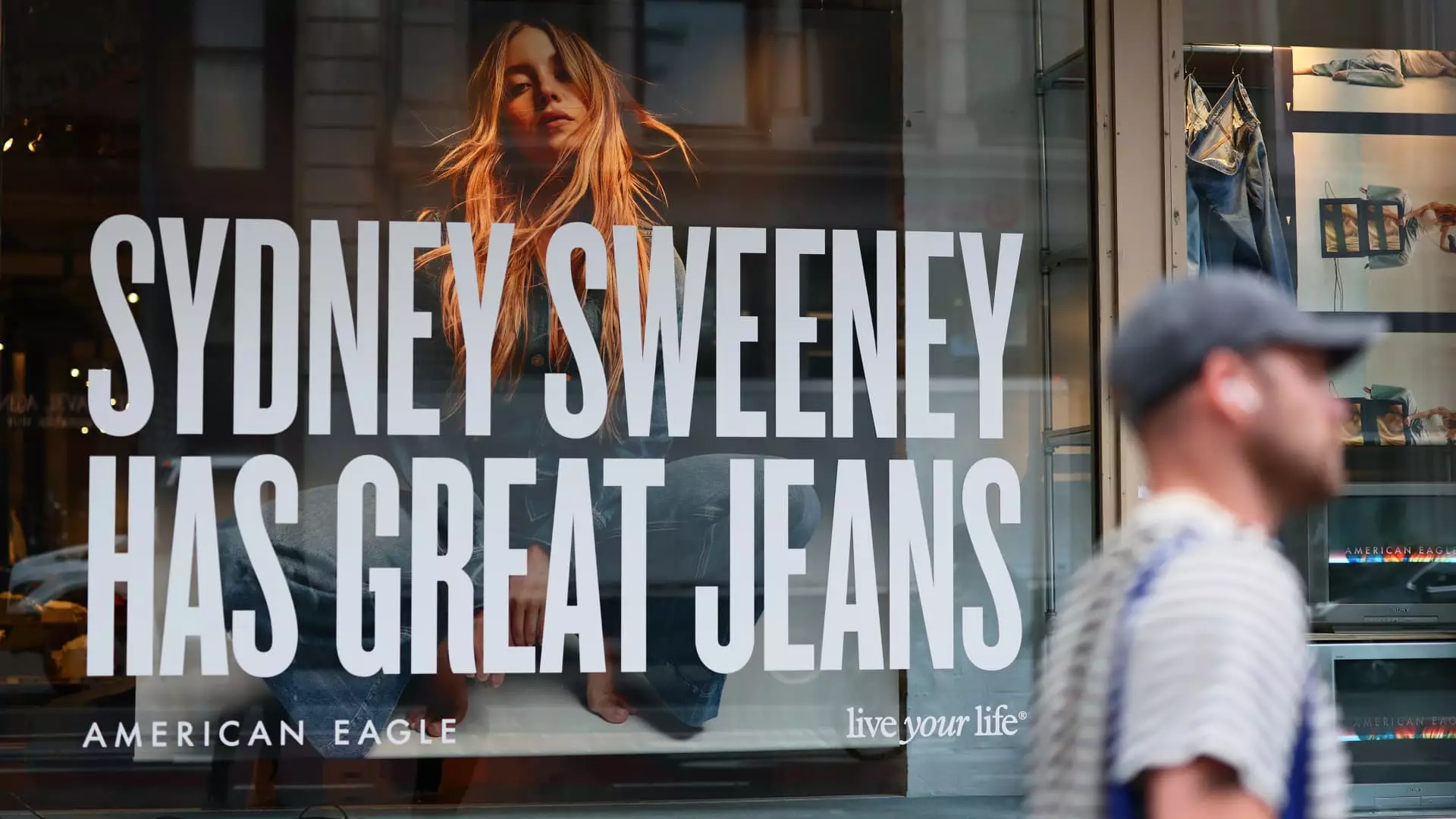In the fiercely competitive landscape of fashion retail, companies often overlook the profound influence of celebrity endorsements and cultural signals. American Eagle’s recent decision to spotlight actress Sydney Sweeney exemplifies this strategy. The brand’s gamble to align itself with a prominent young star, especially one with a politically conservative profile, underscores a shift toward marketing that resonates with a specific demographic: the center-right, culturally traditional consumers. This approach not only aims to boost sales but also signals a brand identity that embraces values often associated with a conservative outlook, such as a preference for traditional aesthetics and straightforward messaging.
Celebrity endorsements have always wielded influence, but in today’s social media-driven environment, they serve as both a marketing tool and a cultural statement. American Eagle’s choice of Sweeney, who is publicly a registered Republican, aims to forge an authentic connection with consumers who feel alienated by the increasingly woke marketing trends popular among mainstream brands. This move seeks to capitalize on cultural resonance—appealing to shoppers tired of over-sensitivity and woke identity politics, offering instead a product that champions straightforward, unabashed messaging. Critics may debate whether this is a savvy branding move or a calculated risk; the outcome depends on whether the brand can maintain authentic engagement without alienating its broader audience.
The Risks of Playing with Cultural and Political Statements
The controversy surrounding American Eagle’s campaign reveals a delicate balancing act. Their slogan, “Sydney Sweeney has great jeans,” was meant to be simple and direct, emphasizing product quality. However, it quickly became a lightning rod for criticism, with skeptics claiming it veered into double entendre territory, suggesting deeper, more problematic implications about the actress’s genetics and appearance. The backlash highlights how marketing that appears to lean into traditional or conservative narratives can backfire, especially when perceived as dismissive of broader cultural sensitivities.
More troubling is the broader conversation about what it means to market products in a tense cultural climate. On one side, companies who eschew “woke” campaigns risk alienating younger, progressive consumers who prioritize social justice and diversity. On the other, brands like American Eagle that lean toward traditional messaging risk appearing out of touch or dismissive of the increasingly complex social issues that define modern identity. This push-and-pull reveals a larger cultural schism in which corporations struggle to find a middle ground. American Eagle’s quiet defense—that the campaign is solely about jeans—misses the power of perception, illustrating a failure to fully grasp how marketing campaigns are intertwined with cultural narratives.
The Market Response and the Power of Political Endorsements
The timing of this controversy and the subsequent market response demonstrates the volatile nature of brand perception in a polarized society. When President Donald Trump publicly praised Sweeney’s campaign, the stock surged by more than 15%, illustrating how political endorsement—even from a figure as divisive as Trump—can significantly influence investor sentiment. This reaction underscores a crucial point: consumers and investors are increasingly responsive to political signals, especially those aligned with their values.
Conversely, before Trump’s endorsement, American Eagle’s shares endured a downward trend—the company struggles with macroeconomic headwinds, including tariffs, declining consumer spending, and inventory missteps. Yet, the company’s strategic pivot to a more politically conservative branding approach may be a calculated effort to stabilize its market share by appealing to a core, loyal demographic. Search interest indicates that American Eagle has gained renewed visibility, but whether this translates into sustainable sales remains uncertain. The company’s recent financial reports highlight ongoing struggles, with declining sales and margins. The question remains: can a bold marketing campaign centered around traditional values revive a retailer that’s been battered by external economic forces and internal merchandising mistakes?
The Cultural Divide in Marketing Strategy
American Eagle’s approach highlights a broader divide in marketing philosophy. While some brands veer toward woke ideology to showcase inclusivity and social awareness, others opt for more traditional or conservative messaging, banking on cultural loyalty. The current environment makes it clear that neither approach guarantees success; instead, effective branding now depends on aligning with a target audience’s values without alienating others.
This incident reflects the importance of cultural literacy in branding, where understanding societal mood swings is crucial. American Eagle’s silence and refusal to clarify the slogan’s intent, coupled with the politically charged environment, may have played into the narrative that the campaign is more about cultural positioning than just jeans. The rejection of woke marketing doesn’t automatically translate to broad appeal; it risks appearing reactionary and out of step with multicultural, diverse consumer identities. Yet, for the centre-right demographic, this might be precisely the message they’re waiting for—a sign that their values still have a place in mainstream branding.
The Future of American Eagle and Similar Brands
The true test for American Eagle is whether this politically tinged campaign can translate into concrete sales figures that reverse its recent downward trajectory. The company’s recent forecasts reveal a challenging environment: declining revenue, shrinking margins, and an uncertain macroeconomic future threaten its survival. However, the transaction of culture and commerce suggests that a well-timed, aligned message can marginally shift consumer sentiment, if not long-term loyalty.
In the end, American Eagle’s situation exemplifies the risks and rewards of navigating a polarized culture through marketing. Their gamble—taking a bold stance that appeals to a specific demographic—could either become a case study in successful niche branding or a cautionary tale about oversimplifying complex societal debates. Given the current landscape, brands that recognize and authentically resonate with core values will likely hold a decisive advantage over those caught in the crossfire of cultural and political storms.

